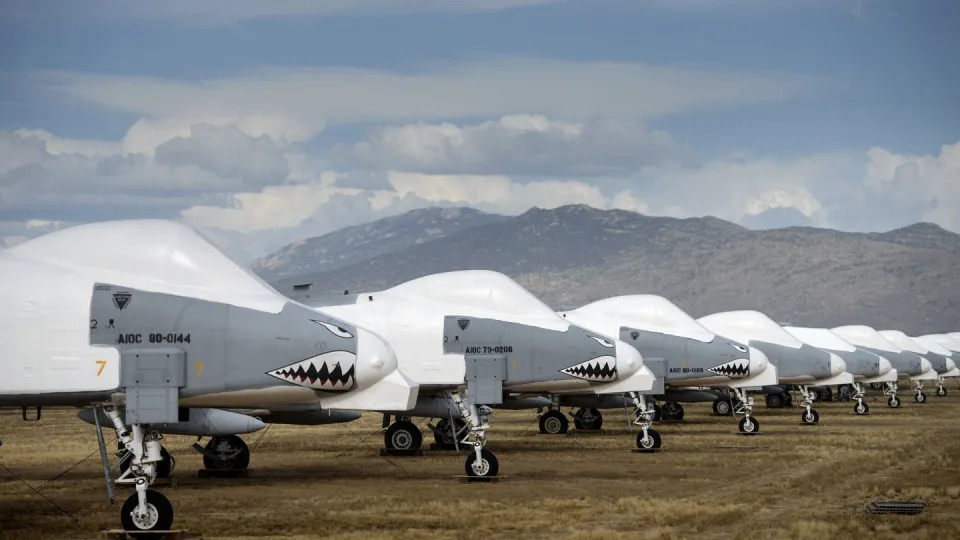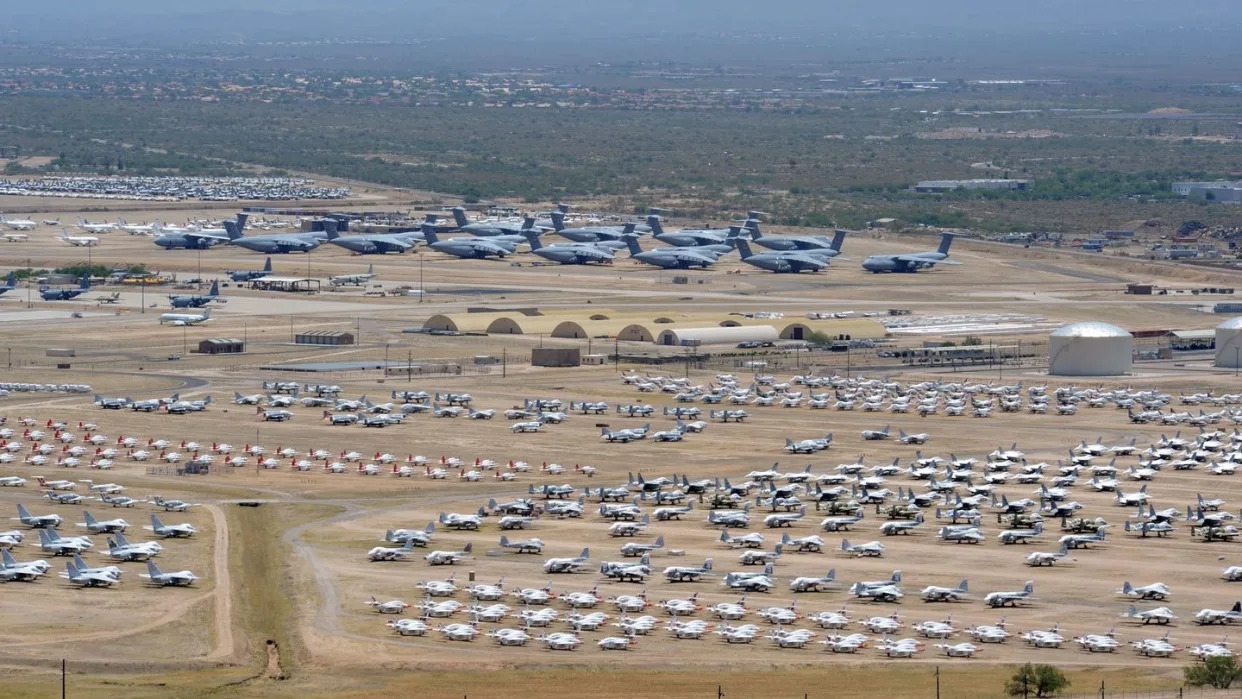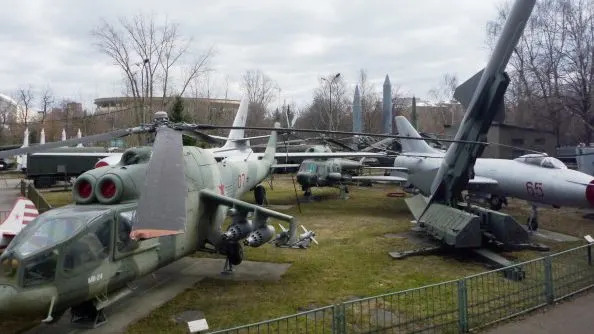Fri, September 15, 2023
The concept of a warplane “boneyard,” where old planes go when they retire, is actually pretty rare.
While the Pentagon maintains the world’s largest boneyard, the concept is relatively unknown to other countries.
Most countries fly planes until they are no longer useful, but America’s four air forces retire planes that are still useful all the time.
The “boneyard” is a macabre term that has come to stand for places—that are usually dry and dusty—where airplanes are sent to wait. Sometimes, the planes are waiting to fly again; sometimes the planes are waiting to go to the scrapyard. But by and large, the military aircraft boneyard is an American phenomenon, in which a combination of geography and the world’s largest air force creates a stable supply of planes that the U.S. government isn’t quite sure what to do with. Here’s everything you need to know about them.
End of Life

Most aircraft at Davis Monthan, including these A-10 Warthogs, are shrink-wrapped to keep the elements out.Getty Images
Military aircraft have varying lifespans. In wartime, the life of a fighter, bomber, or transport plane could be measured in minutes, as attrition grinds down a fighting air force. Warplanes have always been semi-disposable assets in wartime; until as recently as Vietnam, air armies have fully expected to lose planes in combat.
Peacetime is a different story. The use of steel and aluminum over wood and fabric dramatically increased the service life of warplanes, to the point that almost all eventually become technologically obsolete long before they become worn out by the stresses of flight operations. The average U.S. Air Force aircraft is about 30 years old, and the service must contend with eight fleets over the age of 50.
All of this means that warplanes can last for decades, and then remain structurally viable for several decades more. Entire fleets of airplanes have received mid-life updates designed to increase their service lives: the F/A-18E/F Super Hornet is receiving the vital Block III upgrade, the A-10 Warthog fleet received new wings, and the F-16 Fighting Falcon is in the process of getting a radar makeover. The potential for upgrades, combined with plane fleets that keep flying for decades or more, make it worthwhile to keep old planes around …for a little while, anyway.
Rich Country Problems

The B-52 Stratofortress bomber, “Wise Guy,” tail number 60-034, as it appeared before a 2019–2021 refurbishment that returned it to active flying duty.U.S. Air Force
The U.S. military, including the Air Force, Navy, Marine Corps, and Army, currently operates about 13,000 aircraft of all types. This runs a broad gamut from fighter jets like the F-22 Raptor and F-35 Lightning II to planes like the C-17 transport and Guardrail intelligence-gathering aircraft. The worldwide fleet is adding and subtracting planes every day. Some aircraft are cut because they are worn out, others succumb to budget cuts. All are still useful as scrap, but many are a little more useful than that, ranging from still being flyable to having useful parts, such as ejection seats, that can still be harvested from an unflyable plane.
Since World War II, the U.S. military has used the southwestern desert to keep planes in a post-retirement holding pattern. At Davis-Monthan Air Force Base in Arizona, thousands of aircraft sit awaiting their eventual fate. The lack of rainfall and humidity slows their deterioration in the outdoors, making recovering parts and equipment decades after retirement a viable proposition. Some planes eventually re-enter service: in 2021 the B-52H bomber “Wise Guy” rejoined America’s bomber fleet after a lengthy refurbishment, though it may have had a scorpion or two hiding in the wheel wells.
The bottom line is, the United States is a rich enough country to avoid cutting up planes for scrap value as soon as they leave service, wisely keeping them around just in case.
The Rest of the World
Other countries, even NATO allies, have relatively few aircraft and retire planes in much smaller numbers. The United Kingdom, for example, has only 142 fighter jets, while France has 266, and Germany has 209. These fleets are relatively small, grow slowly, and planes are retired infrequently. These countries also lack the arid conditions to store jets in good condition. In Europe, the closest thing to a boneyard is the private fighter jet collection of vintner Michel Pont.
Russia has the capacity to store warbirds, but most of the fleet was likely cut up for scrap during the 1990s and 2000s. One location with military aircraft is the Central Aviation Museum outside of Moscow. Aside from the usual Mikoyan-Gurevich and Sukhoi jets, the museum hosts a Tu-22 “Backfire” bomber, Mi-26 “Halo” heavy lift helicopters, a Mil V-12 twin-rotor superheavy helicopter, Yak-28 “Brewer” attack jets, and at least one intact Yak-38 “Forger” vertical takeoff and landing fighter. Zhukovsky International Airport is another location with a mix of well-known and not-so-well-known aircraft, including the experimental Sukhoi Su-47 Berkut (“Golden Eagle”) swept-wing fighter and the MiG 1.44 prototype fighter.
China’s air forces, the People’s Liberation Army Air Force and People’s Liberation Army Navy Air Force, have undergone rapid expansion over the past two decades. China is known to have held onto large numbers of J-6 fighters, and there are suggestions the planes are being modified to act as unmanned aerial vehicles. There is the China Aviation Museum north of Beijing with a modest collection of 20th-century Chinese warplanes. China does not appear to have an official boneyard of Chinese air power, but if it exists it is probably in the hot, dry, Xinjiang province.
LA REVUE GAUCHE - Left Comment: Search results for PERMANENT ARMS ECONOMY



No comments:
Post a Comment